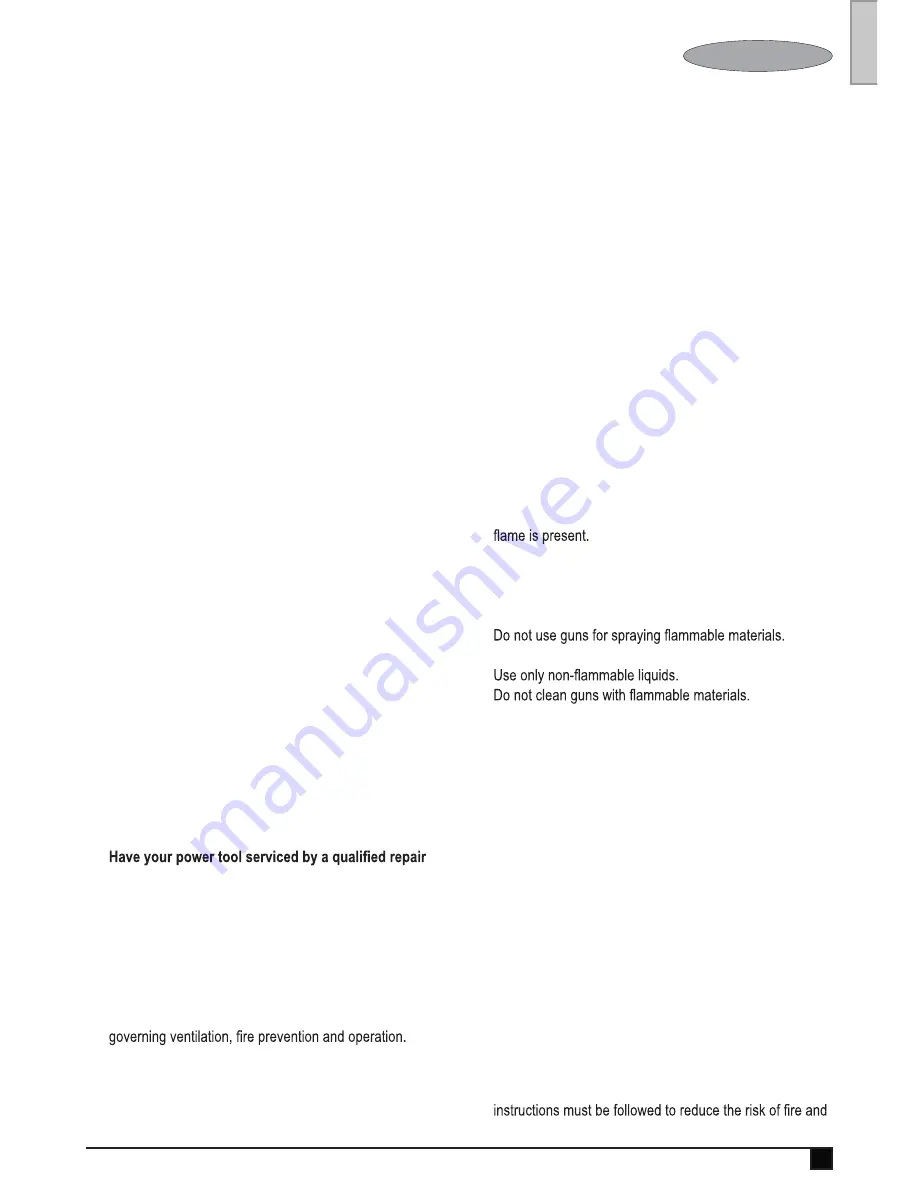
can be caught in moving parts.
g. If devices are provided for the connection of dust
extraction and collection facilities, ensure these are
connected and properly used. Use of dust collection can
reduce dust-related hazards.
4. Power tool use and care
a. Do not force the power tool. Use the correct power
tool for your application. The correct power tool will do
the job better and safer at the rate for which it was
designed.
b. Do not use the power tool if the switch does not turn it
on and off. Any power tool that cannot be controlled with
the switch is dangerous and must be repaired.
7
ENGLISH
(Original instructions)
c. Disconnect the plug from the power source and/or the
battery pack from the power tool before making any
adjustments, changing accessories, or storing power
tools. Such preventive safety measures reduce the risk of
starting the power tool accidentally.
d. Store idle power tools out of the reach of children and
do not allow persons unfamiliar with the power tool or
these instructions to operate the power tool. Power
tools are dangerous in the hands of untrained users.
e. Maintain power tools. Check for misalignment or
binding of moving parts, breakage of parts and any
other condition that may affect the power tools
operation. If damaged, have the power tool repaired
before use. Many accidents are caused by poorly
maintained power tools.
f. Keep cutting tools sharp and clean. Properly
maintained cutting tools with sharp cutting edges are less
likely to bind and are easier to control.
g. Use the power tool, accessories and tool bits etc. in
accordance with these instructions, taking into
account the working conditions and the work to be
performed. Use of the power tool for operations different
from those intended could result in a hazardous situation.
5. Service
a.
person using only identical replacement parts. This
will ensure that the safety of the power tool is maintained.
Additional safety instructions
Warning!
u
Read all instructions and safety precautions for equipment
and spray material before operating any equipment.
u
Comply with all appropriate local, state and national codes
u
Keep sprayer out of reach of children.
u
Hearing protection is recommended for extended use.
u
Use eye protection to keep particles out of eyes.
Hazardous vapours
Insecticides and other materials may be harmful if inhaled
causing severe nausea, fainting or poisoning.
a. Use a respirator or mask whenever there is a chance
that vapours may be inhaled. Read all instructions
with the spray material and mask to ensure that it will
provide the necessary protection against the
inhalation of harmful vapours.
Additional safety instructions for paint sprayers
Warning!
u
Before any use, be sure anyone using this sprayer reads
and understands all safety instructions and other informa-
tion contained in this manual.
u
Do not use caustic (alkali) self heating or corrosive (acid)
liquids in this sprayer as these can corrode metal parts or
weaken hose and seals.
u
Do not use hot or boiling liquids in sprayer as this may
weaken tank and hose.
u
Do not leave residue or spray material in the tank after
using sprayer.
u
Do not smoke while spraying or spray where spark of
u
Do thoroughly inspect both inside and outside of sprayer
before each use.
u
Do empty, clean and drain the tank after each use accord-
ing to directions.
u
u
Do not spray any material where the hazard is not known.
u
u
Personal safety
a. Additional personal safety equipment such as
appropriate gloves and a respirator or mask must be
used when handling chemicals. Safety equipment used
for appropriate conditions will reduce personal injuries.
b. Do not spray yourself, any person or animal. Keep
hands and other body parts away from the discharge.
In case of skin injection, seek medical attention
immediately. The sprayed material may pierce the skin
and be injected to your body.
c. Do not treat injection as a simple cut. Spray is able to
inject toxins into the body and cause serious bodily injury.
In the event that injection occurs, seek medical attention
immediately.
d. Beware of any hazards presented by the material
being sprayed. Consult the markings on the container
or the information supplied by the manufacturer of the
material to be sprayed, including requirements for the
use of personal protective equipment. Manufacturer's
personal injury, derived from toxins, carcinogens, etc.
Summary of Contents for HVLP400
Page 1: ...HVLP400 English 06 www blackanddecker com ...
Page 2: ...2 A B C D E F ...
Page 3: ...3 G H I J K L ...
Page 4: ...4 M N O P Q R I J ...
Page 5: ...5 T U S ...





























